|
This looks similar in concept to Qinna (擒拿) - Joint Manipulation - or literally 'Catch Grasp'. A limb (or the torso) is seized and stopped from independently moving around its joint(s). When pressure is applied to the joint - moving it in the opposite direction to that which it is supposed to move - then pain is induced. Of course, extreme pressure leads to dislocation of the joint-structure and breakage of the bone shaft. I notice that many of the stances and movements look very similar to Kata and Form combinations. The idea, I assume, is to take control of the opponent's torso or limb, etc.
0 Comments
Practicing Taijiquan in the early morning (the or evening - when this picture was taken) is when the air (qi) is at its most inspiring and invigorating! At the moment, although the temperature was -7 last week - today it is +10 degrees Celsius. Whatever the case, the air is cool and fresh and seems to permeate every cell of the body - despite the fact that in reality the breath enters and leaves through the nose and/or mouth. Of course, I am told that a small amount of oxygen leaves and enters through the pours of the skin - but too little for the entire body to exist upon. Still, when breathing deeply (into the lower Dantian) the complete lower lung capacity is utilised giving the feeling that a 'power' or 'entity' is dropping into the lower abdominal area (traditionally two-inches below the naval).
I find it interesting that this special area (which is probably lower than two-inches in reality) coincides with the actual centre of gravity relating to the human (physical) body. The mastering of 'breath' is inherently linked to the mastery of 'balance' and 'movement' all mediated through an enhanced 'rootedness'. The clarified and purified 'awareness' of the mind directs all this activity - which includes the harnessing of the rising (rebounding) force that emanates from the dropped bodyweight impacting with the ground. The dropped bodyweight and rising force is channelled through the epicentre of the perfectly 'aligned' bone-structure (skeleton) which is never lost despite the complexity of the movement involved. Of course, part of the qigong used to prepare the practitioner for Taijiquan practice is 'Standing Like a Stake' also termed 'Holding the Ball' - where an individual stands perfectly 'still' both physically and psychologically. We become like a mighty tree which can withstand any weather or unexpected external force! Within the peacefulness of the well-rooted tree is an immense power waiting to be discovered, harnessed and manifest! When running with the weighted rucksack – I use the two broad aspects of Daoist breathing usually termed ‘natural’ and ‘correct’. Bear in mind that this ‘moving’ activity is not the complex seated ‘neidan’ practice and is not subject to that type of control. Instead, as the bodily frame is placed under intense pressure, what is required is deep and full breaths, usually in and out of the mouth. This is because unlike the state of perfect balance that is constructed during the practice of Taijiquan (where the breath is taken in through the nose and expelled through the mouth) - running with a weighted rucksack overloads the biological processes to such a high degree that the maximum amount of oxygen is required to maintain its function. This is achieved by breathing in and out through the mouth. Once the parameters are set, what then is ‘Daoist’ about this practice? Natural breathing requires breathing deeply into the lower abdomen – this emphasises the use of the middle and lower-lung capacity – with the minimum of upper-lung capacity. Correct breathing requires the pushing-up of the diaphragm so that the inward breath is compressed from the expanded lower-lung and into the middle and upper-lung. Correct breathing inflates the usually neglected upper-lung capacity which is full of highly dense oxygen-absorbing body-cells. Generally speaking, the upper-lung is often used by the body in ‘emergency’ breathing if the body has become injured, ill, or is inhabiting an oxygen-deficient environment. The ancient Daoists seem to have understood that there is something special about the little used upper-lung within everyday life – and with this understanding they formulated a physical method of breathing that allows a voluntary access of this area. I tend to use ‘natural’ breathing when running with the weighted rucksack – but I switch to the ‘correct’ method when I need to stop to cross the road and/or significantly change direction. I usually take three full ‘correct’ breaths (which oxygenates the body to a greater degree) and then switch back to ‘natural’ breathing which is what I refer to as ‘maintenance’ breathing. Correct breathing in this context is not ‘maintenance’ breathing and should not be confused with the purpose of ‘natural’ breathing. Furthermore, the perspective I am giving here only makes sense when discussing weighted rucksack running. As weighted rucksack running using ‘natural’ breathing dramatically diminishes the oxygen levels in the body (stabilised through fitness levels) – ‘correct’ breathing represents a rapid intake of new oxygen by switching the emphasis of how the breath is managed.
Our family style of Hakka Gongfu involves "Rucksack" running as both an "External" and an "Internal" practice method which builds muscle and joint power, bone strength, and psychological determination and indomitable spirt! As the pack weighs 56 lbs at its maximum weight (it can sometimes be raised to 76 lbs - but this is rare) - it is also a good indicator of developing and maintaining (skeletal) body-alignment - important for dropped body-weight and rebounding power found in the Internal method found in Taijiquan. When young, rucksack running is "External" - whilst for the older practitioner rucksack running becomes "Internal" - and has to be modified as a practice. Long distance running can be interspersed (or changed with) the shorter distances involved in circuits-training. Either way, the positive effects on the mind and body are absolutely the same: I have been pursuing a three-month circuit-training of five-days a week running three-time around the block (Monday-Friday) - carrying the 56 lbs pack. Running in urban environments is easier in one way as the surfaces tend to "flatter" than their "cross-country" (off-road) equivalents. However, running with a weighted rucksack is dangerous as when falling down the impact with the ground is magnified by the extra weight being carried. Falling upon grass, in mud or through water, for instance, is preferrable to falling upon concrete, as such a tumble "cushions" the fall. Yesterday (Monday), at around 830 am, I was slightly distracted whilst running over a broken piece of tarmacked pavement. This happened during the 66th run of my intended 70 - a training stint which will conclude this Friday (December 22nd, 2023). My legs were cut-out from beneath me and I fell onto my hands and knees - with the rucksack propelled upwards and over my right-shoulder. My palms soundly struck the pavement - saving me from a face injury - with my well-conditioned hands suffering no damage. Most the weight, however, entered the ground through my left-knee. My right-knee took about half as much impact. the friction (heat) between the surface-skin of my knees and the fabric of my running-trousers caused the surface-skin to "rub-off" - as can still be seen above. This is why I now have substantial knee-abrasions. A passing neighbour - who was astonished to see me tumble past him - stopped to help me up. This was not as easy as it might have looked - as I had to readjust the heavy pack, and rearrange my legs and knees to attempt an upward thrust from the ground in good order (from a kneeling on one-knee position). This I successfully achieved - thanking my Muslim neighbour for his truly caring attitude. This is why I replied "Peace to you - my friend"! I then reassumed my training - showing a "straight" and "committed" mind-set in the face of adversity - finishing that day's training. When I got home, my partner - Gee - carried-out her usual "nursing" function of repairing the war-wounds of her Hakka Warrior husband using the family Dit Da Jow to clean and dress the wounds. Today, I was up early to continue my training in the rain!
I was introduced to these movements in my youth - as a foundation to learning 'Old' (Yang) Taijiquan! In those days traditional training from a Chinese teacher was never questioned. The onus was on 'secrecy' - as if no one else possessed the knowledge just shared (today, the emphasis in China is upon an open sharing). I was told that the outer bodily positions-structures guided the qi energy with greater force into (and through) the five sets of corresponding inner organs thus strengthening and purifying them. These exercises are established upon the theory of the 'Five Phases' (五行 - Wu Xing) - first found in the 'Classic of History' (書經 - Shu Jing) - probably linked to the five planets visible to the naked-eye of the ancient civilisations: Animal Organ Tiger Liver-Gall Bladder Deer Kidneys-Bladder Bear Spleen-Stomach Monkey Heart-Small Intestine Crane Lung-Large Intestine As the 'Bear' is the central animal influence of our gongfu family style - this practice was seen as establishing (and enhancing) the rooted and central stability (and strength) this animal represents (the 'spirit' of the bear involves the practitioner suddenly standing-up and appearing much bigger and over-powering). According to the English language Wiki-page - this 'Five Animal Interplay' exercise is linked to the development of Hung Gar and Fujian White Crane (Bak Hok)! The way I was taught this exercise involved 'morning' practice (yin moving to yang) and 'evening' practice (yang moving to yin) - with the movements staying the same. Unlike the 'connected' flow shown in the above video (a different style or method) - I was taught 'single' structure exercises that started with feet shoulder-width apart and hands by my sides. After assuming and holding the required position - the structure was completely dropped away back to the 'ready' (neutral) position - in preparation for assuming the next (different) position. I was taught that all these five movements exist implicitly in the Taijiquan Form - and so eventually I was no longer required to practice them separately.
Interesting - Thank for drawing my attention! The following is what I can Tell you. 搂 - lou3 = A mother spreading her arms (and hands) to embrace an object - pulling it close to her body (like a mother embracing a baby). This might be described as 'grappling' in English - just as grappling-hooks were once used in the Royal Navy to grip-hold of enemy ships (preventing their free movement) and 'pulling' these structures close so that 'Marines' could then jump onboard, neutralise the enemy crew and take control of their ship! 子 - zi3 = Son, off-spring (children) or 'Master' and 'Teacher' (I think this derives from the legends stating that Laozi - one of the founders of the Daoist religion - was born as an old man with white hair. Daoism advocates a rejuvenating wisdom that purports to create the state of 'Immortality'). Stepping inside the opponent's critical distance and thus 'taking away' their ability to respond effectively. Furthermore, the manner in how the opponent is tripped and thrown involves the deliberate 'hurting' of their body through impat with the ground. This exists within all traditional Chinese gongfu and involves the breaking of fingers and toes, joint dislocation, eye-gouging and groin-kicking. Punching the nose and throat is a basic requirement. A practitioner gets inside the opponent's guard (seen in this video) and takes control of the limbs and torso. A Master of this art 'prevents' the opponent initiating the smooth rolling seen within modern Judo, Aikido or Jiujitsu - as 'falling' in this context must inflict damage upon the opponent - a punishment considered 'just' within ancient China for starting a fight! This why training in this type of in-fighting requires the ability to roll on an unpadded floor. The inner art is to prevent the intended damage from the fall - by 'countering' its intent through 'correct' placement (usually at speed). This is a key factor within traditional Taijiquan practice.
Iran: Chen Style (陳家) Taijiquan Under 'MAZIAR KEBAT' (مازیار کتابت) of Fars Province! (18.6.2023)6/18/2023 The Chen Taijiquan Style technique and expression featured on this Telegram Channel site – entitled in the written Persian language as ‘Taijiquan is the Endless Way’ (تای چی راه بی پایان) – is very good! The grey-bearded teacher is named ‘Maziar Kebat’ (مازیار کتابت) – which might mean ‘Master Kebat’ – and he lives in the Fars Province of Southwest Iran. The setting is beautiful as is the high quality of the martial technique! I suspect that we may assume from this that ‘Taijiquan’ is considered ‘Halal’ within the faith of Islam – a fact which grants the practitioners a certain enhanced ‘virtue’. In China, Islam (and Muslims) are greatly respected for a) their spiritual purity and b) their martial integrity! Good to see Taijiquan in Iran and the people united in practice! According to the People’s Daily the consensus is that Ma Baoguo is NOT a genuine martial arts ‘Master’ - but rather a highly effective ‘Front Man’ deliberately employing comedic routines – to ‘sell’ (at extortionate prices) made-up (and seemingly ‘random’) movements falsely presented as ‘Ancient’ elements of traditional Chinese martial arts! As numerous unseen individuals and business entities supported Ma Baoguo – he was compelled twice (during 2017 and 2020) to put his health and well-being on the line by ‘sparring’ (full contact) with much younger men despite already being in his mid to late 60s! As can be imagined, since becoming a media sensation the biography of Ma Baoguo is well-known in China! Despite the ‘Official Line’ emanating from within China (and echoed outside of China) stating that Ma Baoguo is ‘fake’, nevertheless, he does possess a martial background (which varies in degrees of legitimacy from ‘possible’ to ‘spurious’) – but which can be substantiated through a mixture of verifiable ‘Personal’ and ‘Public’ Records. This Record maybe summarised as follows: a) The Ma Family Martial Arts Style is known as the ‘Shandong Ma Family Martial art’ (山东马家功夫 - Shan Dong Ma Jia Gong Fu) and has been passed down as follows: i) ‘Ma Zhongyi’ (马忠义) taught his son ‘Ma Defeng’ (马德峰). ii) ‘Ma Defeng’ (马德峰) taught son - Ma Baoguo - from around 7-years of age (during 1959). iii) ‘Ma Baoguo’ (马保国) has taught his son - ‘Ma Xiaoyang’ (马晓阳). b) Ma Baoguo served for six-years in a PLA (Shandong) Garrison – stationed between 1970-1976 (where it is likely that he trained in militarised ‘Longfist’ [長拳 - Chang Quan]). c) Between 1982-1984 - Ma Baoguo (who was aged between 30-32 years old at this time) attended Xi'an University. Here, Ma Baoguo trained under Master Shang Ji (尚济) - a teacher who is universally recognised as a legitimate Xingyiquan (形意拳) practitioner. d) During 1987, Ma Baoguo met one ‘Guo Daxia’ (郭大侠) of ‘Wudang’ (武当) - a self-proclaimed lineage successor and ‘Great Hero’ of the ‘Wudang’ and ‘Emei’ (峨眉) martial traditions! This person is also known as ‘Guo Shanghai’ (郭升海). Ma Baoguo studied with this teacher – and later became a ‘Disciple’. e) During the summer of 1997, Ma Baoguo met Wang Changhai (王长海) - the second-generation descendant of Hunyuan (混元) Taiji (太极). Wang Changhai taught martial arts in the local park, and Ma Baoguo is recorded as participating in just ‘their’ (public) Push-Hands Classes. Although Ma Baoguo has claimed that Wang Changhai was his ‘Master’ and transmitted his Style to him - Ma Baoguo is not included amongst the ‘Official’ thirty-nine ‘Inheriting’ Disciples of the (Official) Hunyuan Taiji genealogy. He was born during 1952 in the Linyi (临沂) area of Northeast China’s Shandong province – but was raised further South - in Central China’s Henan province. His father was ‘Ma Defeng’ (马德峰) - who served in the Eighth Route Army, whilst his grandfather was ‘Ma Zhongyi’ (马忠义) - a bona fide martial artist. The Family Style passed down from ‘Ma Zhongyi’ (马忠义) to his son ‘Ma Defeng’ (马德峰) - was known as ‘Shandong Ma Family Martial art’ (山东马家功夫 - Shan Dong Ma Jia Gong Fu). Ma Baoguo started learning this martial art from his father at around 7-years of age (during 1959). At the end of 1968 (at 16-years old) - Ma Baoguo enrolled in Neixiang County Senior High School (Neixiang No. 1 High School) in Henan Province. During December 1970 (at 18-years old), Ma Baoguo, (who had successfully graduated from high school), joined the People’s Liberation Army (PLA) and served in the Shandong Long Island Fortress for six-years (until 1976 – when he was 23-years old). Before the Spring Festival in 1976 (when he was 24-years old), Ma Baoguo married his fiancée - Chen Shumin (陈淑敏) - a good women who worked hard in the countryside. During March 1976, Ma Baoguo was demobilized from the PLA after six-years of Service - returned to Neixiang County. In May, he was assigned to Nanyang City as a worker. Despite the intrigue that developed during his later life, Ma Baoguo did have a youth immersed within martial arts and military study. A typical narrative suggests that in 2001, Ma Baoguo’s son – Ma Xiaoyang – enrolled to study for an academic Degree (Master of Business Administration) in the UK. Ma Baoguo was required to borrow a very large amount of money to finance this venture, and this created a large family debt. Ma Baoguo travelled to the UK in 2002 to assist his son through teaching Taijiquan to the British people – and it is here (and not in China) - where Ma Baoguo began to find fame and admiration! Between 2002-2007 he attracted thousands of British students all willing to pay for his instruction! This is how Ma Baoguo became very rich and managed to pay-off all his family debt! During February 2004, he founded the "British Hunyuan Taijiquan Association"! This was his first organisation which fed-back into his native China! On the strength of this achievement, during the Summer of 2013, Ma Baoguo, (together with his son - Ma Xiaoyang - and his fellow disciples) co-founded the ‘Hunyuan Xingyi Taiji Gate’ (浑元形意太极门 - Hun Yuan Xing Yi Tai Ji Men) - whilst still claiming a ‘hidden’ transmission from Wang Changhai (王长海) - an assertion that has not yet been convincingly ‘denied’ by the established followers of Wang Changhai. Ma Baoguo describes this organisation as an ‘Advanced’ Internal Chinese Martial Arts School. During the Autumn of 2015, Ma Baoguo assisted his son - Ma Xiaoyang - in founding the ‘Shanghai Hunyuan Martial Arts Temple’ (上海浑元国术馆 - Shang Hai Hun Yuan Guo Shu Guan) - serving as the ‘Honorary’ curator. On March 12, 2015, the then 64-year-old Ma Baoguo was in the UK once again on a short visit. During this time, he ‘hired’ a local MMA fighter turned-actor – ‘Peter Irving’ - for an hour of work. This involved set-piece photography and video scenes designed to highlight the Style of martial arts Ma Baoguo had developed! There was no fighting or conflict. Later, however, the footage was released on the internet claiming that Ma Baoguo had ‘challenged’ and ‘defeated’ an MMA European Champion! (There were also further spurious claims of another British fighter being defeated - supposedly later the same day). In 2017, the 65-year-old Ma Baoguo appeared in the public eye (in China) for the first time, He achieved this feat by agreeing to ‘fight’ the 37-year-old MMA fighter - Xu Xiaodong (徐晓冬) in Shanghai on June 26th! However, as the fight was about to start, the Police arrived and stated the venue was not suitable for such an event and that everyone was to peacefully leave! Many accused Xu Xiaodong of only agreeing to fight ‘old’ men and never anyone who could genuinely challenge him. The interest surrounding this intended event attracted thousands of people to the cause of Ma Baoguo and assisted in the boosting of his business interests! Meanwhile, Ma Baoguo implied that he had ‘won’ the 2017 fight by using ‘hidden’ spiritual powers that manipulated physical matter and took away Xu Xiaodong’s ability to fight – whilst rumours surfaced that in fact Ma Baoguo had ordered his nephew (‘Ma Bin’ - 马斌) to telephone the Police and ‘Report’ the venue for safety failings (the intercepted text is believed to have read ‘Quick - tell the Police before he kills me’)! Ma Baoguo denied this allegation – stating that he did not have a nephew named “Ma Bin”! This all fed into in Ma Baoguo’s clash with the 49-year-old ‘Wang Qingmin’ (王庆民) - a ‘folk martial artist’ (in fact, this former PLA soldier is an expert in Xingyiquan) - which occurred on May 17th, 2020, in the Zibo area of Shandong (although neither participant received any payment for taking part). This fight lasted no longer than 30 seconds and involved a 68-year-old Ma Baoguo being knocked-down three times by series of straight right punches landed by Wang Qingmin! Throughout the contest Wang Qingmin was ‘orthodox’ (with his left-hand and left-foot always forward) - whilst Ma Baoguo fought exclusively in ‘south-paw’ - with his right-hand and right-foot forward! This left Ma Baoguo continuously ‘open’ to Wang Qingmin’s straight-right' - which Ma Baoguo was unable to defend against! The first punch knocked Ma Baoguo’s head around four to six inches ‘backward’ from the vertical position and probably did all the damage – irreparably jarring the brain (in fact, these blows were two straight punches landed in quick succession). Momentum was added to Wang Qingmin’s blows by Ma Baoguo moving forward and slightly to his left (running on to the punches). ft It is remarkable that this 68-year-old man - ‘fake’ or not - managed to get straight to his feet to continue (with no ‘Ten’ count being administered at any point during the contest – although this might have been due to Ma Baoguo getting-up too quickly). In an attempt to avoid this straight-right – Ma Baoguo attempted to move backwards and to his right. However, as he was unable to move quickly enough, Wang Qingmin stepped into the empty space created (covering more ground) – landing a type of ‘sling-shotting’ (single) straight-right that was partially blocked by Ma Baoguo’s raised left-arm – but which still landed to the side of Ma Baoguo’s face. This set of combined movements effectively ‘knocked’ Ma Baoguo head and pelvic girdle quicker to his right than his legs could carry him (fatally altering his centre of balance) – and he fell once again (although I suspect his legs were still not working properly following the first knock-down). Yet again Ma Baoguo got to his feet – although by now he was looking very much like the old man he was. As there was nothing coming back from Ma Baoguo – Wang Qingmin had been allowed to establish the habit of ‘walking forward’ with virtually no guard – and this is exactly what he kept on doing. Ma Baoguo, on the other hand, continued to circle to his right – and it is at this point in the fight that the only kicks were thrown. As Ma Baoguo is ‘double-weighted’ (a habit seen in all beginners which causes a cognitive ‘delay’ between ‘preparing’ the body to throw a kick – and ‘actually’ throwing the kick) - he launches a front (heel) kick off his right-lag – but he does this by momentarily placing his left-leg forward (presumably in an attempt to gain momentum), a desperate move which missed its target (again, even taking into account his poor technique, I suspect his legs were not working properly following the accumulative effects of the knockdowns). Interestingly, Wang Qingmin appeared to block this attack by ‘kicking’ Ma Baoguo’s attacking kick with a right front (heel) kick of his own (thrown off his reverse-leg). Wang Qingmin then momentarily lands in a ‘southpaw’ stance (the only time he would do this during the entire contest) - simultaneously throwing a straight-right jab (which landed flush to Ma Baoguo’s chin). As Wang Qingmin is uncomfortable fighting in ‘southpaw’ - he immediately switched to his usual ‘orthodox’ stance – throwing yet another (reverse) straight-right punch which also landed flush on Mao Baoguo’s chin! Ma Baoguo absorbs the first ‘jab’ apparently unscathed – but as soon as the second punch lands (the two punches are about one-second apart) - his stunned and traumatised brain ‘switches-off’ all voluntary control of his body and he falls unconscious to the ground. Official and Medical personnel rush to the aid of the now supine Ma Baoguo – concerned that he may be seriously hurt. He remained unconscious for two-minutes. Chinese Language Sources:
Grand Master (Lineage Inheritor) Wang Maozhai - teaching Wu (吴) Style Taiji Straight Sword (剑 - Jian) at the Grand Temple (太庙 - Tai Miao) in Beijing (a Confucian Temple from the designation) - now known as the 'Cultural Palace of the Working People' - during the 1930s. It is said that this footage was taken by an American 'Travel Journalist'. Grand Master Wang is teaching his son - Wang Zhiying (王子英). I notice how 'light' the Master holds the sword - as if it is 'not there' or is 'fading in and out' of reality...
This Senior Citizen silenced the crowd when she raised her leg above her head! Silence turned into awe when she assumed a perfect ‘Golden Rooster Stands on Guard’ (金鸡独立 - Jin Ji Du Li)! Awe turned into spontaneous applause when she assumed a graceful ‘Single Side Horse’ (一字马 - Yi Zi Ma) Splits! This demonstration of Taijiquan was performed by the 77-year-old Jiang Xuezhen (蒋雪珍) in a park near the ‘White Horse River’ (白马河 - Bai Ma He) - the venue for the 2021 ‘Dragon Boat Race’ held in Fuzhou (Fujian province), Mainland China! This elderly lady was originally an ordinary worker in a garment factory – but is now enjoying her retirement. Not only has she practiced Taijiquan diligently to improve her health and strengthen her weak body - but she also made a name for herself in West Lake Public Park (西湖公园 - Xi Hu Gong Yuan) teaching Taijiquan to the common people! Since her graceful and powerful appearance at the Dragon Boat Festival - Jiang Xuezhen's dazzling martial arts skills have aroused the interest of many citizens! Some citizens cannot help but wonder – if this older lady was a professional gymnast before? Was Jiang Xuezhen involved in a lifetime of athletic training and development? The answer to all these questions is a resounding ‘NO’! In fact, Jiang Xuezhen was an ordinary worker employed in a garment factory before retiring - and she had NEVER received any such specialist education in this area before. The advanced pliability of her body (and its ‘ligaments’) stem from the time of her retiring from working in the garment industry. Jiang Xuezhen had to retire from working in the garment industry at the age of 45-year due to a physical issue (for which she successfully underwent recuperative surgery). Jiang Xuezhen admits that this was a very confusing time for her both emotionally and psychologically! That is until one day, when she was walking to the West Lake Park (taking exercise), this lady encountered a group of people practicing Taijiquan! At that exact moment - EVERY movement of the Yang Style (the Beijing 24-Step Short-Form) she saw resonated with her mind and body - instantly attracting her attention! When Jiang Xuezhen returned home, she immediately made arrangements to purchase a Taijiquan instructional VCD – which she used to learn Taijiquan through watching carefully and copying the exercises! The next step involved Jiang Xuezhen seeking-out Taijiquan instructors who then corrected and adjusted her ‘Form’ whilst discussing explaining the history and purpose of each sequence - making the revitalising movements much more powerful and effective! Although it took a long time of committed and regular practice, the regular performance of the Taijiquan movements and sequences finally start to transform the natural state and condition of her muscles, joint, bones, ligaments and tendons. At the same time her overall health improved as her inner organs began to strengthen. These changes were so profound that her partner also began to regularly practice Taijiquan! Together, they founded the ‘West Lake Park Taijiquan Practice Group’ - which at the time of writing has at least one-hundred members! When giving a recent interview to reporters, Jiang Xuezhen stated: “It is said that with every inch the ligaments stretch – the lifespan is extended by ten years! This is why I stretch my legs every day!” Jiang Xuezhen went on to explain that when she first tried to lift her legs all those years ago – her ligaments were tense there was very little movement with pain! Jiang Xuezhen trained diligently between the ages of 45-60-years old, and then she found that one day ALL the tension in her body completely disappeared and she was able to drop down into the side-splits position – and stand with one leg held-up directly into the air! This is why Jiang Xuezhen is now able to assume the ‘Golden Rooster Stands on Guard’ and ‘Single Side Horse’ Splits with ease! After demonstrating her extraordinary Taijiquan skills, Jiang Xuezhen advises: “Concentrate upon an activity and pursue its perfection with diligence!” This is sound advice, as apart from being able to demonstrate her mastery of Taijiquan – Jiang Xuezhen is also a painter! Jiang Xuezhen explained that she liked to draw since a child - and has always kept one or two drawings of the Four Treasures in the study room at home - after retirement. When she was about 65-years old, Jiang Xuezhen accompanied her partner in the study of flower and bird painting in a university designed to cater to the needs of the elderly. After two years of meticulous flower and bird painting - Jiang Xuezhen turned to landscape painting. The landscape paintings provided by Jiang Xuezhen are truly inspiring – with the background and fore-ground scenery featuring lakes and mountains contrasting perfectly! The art of Jiang Xuezhen generates a unique beauty which is enhanced by an atmosphere which is experienced by the observer as being vast and hazy! Jiang Xuezhen describes herself as a very serious person. When she learns one thing, she spends all her energy on that single activity. In order to learn landscape painting well, she would only go out daily to practice Taijiquan, but rarely for any other reason. She would often spend a week focusing upon a single picture! Then, in order to match the landscape paintings with the beautiful ideograms that comprised the inscriptions, she also spent a year studying different Chinese calligraphy styles such as seal script, official script, and regular script. "If the font is not good-looking, and the inscription is not well-written, it cannot be regarded as a complete and perfect painting." Jiang Xuezhen explained. This is her true character. It has been nearly 30 years since Jiang Xuezhen retired – yet she has retained the eagerness to learn and perfect everything she turns her hand to! Today, in addition to Taijiquan and landscape painting, Jiang Xuezhen can also perform ballroom dancing! As if all these activities are not enough – Jiang Xuezhen also practices Shaolin martial arts! With her extensive knowledge base and engaging personality, Jiang Xuezhen has become something of an inspiration to the surrounding population – a cultural icon for modern China! [Source: Strait Metropolis Daily] Chinese Language Source: 花30年练太极,福州七旬老太一字马惊艳全场
高抬腿过头顶,一个爽快的金鸡独立瞬间赢得现场朋友的喝彩,随即她又在地上来了一个漂亮又利索的一字马,把节目推向了高潮……不久前,在福州白马河公园举行的端午节活动现场,一位老太的表演让不少市民自愧不如。这位老太就是福州77岁的蒋雪珍,原是服装厂工人的她,在退休后寻找到自我,不仅苦练太极拳改善了虚弱的身体,还在西湖公园“打”出了名堂,将太极拳教授给了更多的人。 60余岁练就金鸡独立、一字马动作 自从在端午节活动中的精彩亮相后,蒋雪珍的花式炫技引起了不少市民的兴趣,有的市民不禁疑惑问,这位老太太以前是不是体操运动员?其实,蒋雪珍退休前是一名服装厂的工人,之前也没有从事过这方面的练习,有着柔软的韧带的起因还要从她退休时说起。 45岁时的蒋雪珍因为身体原因动了手术后,便从原来就职的服装厂退休了。而突然的退休让将蒋雪珍手足无措,每日不知道该做些什么,陷入了迷茫。直到有一日,她散步到西湖公园时,看到了不少人在练太极拳,一招一式瞬间吸引了她的注意。抱着锻炼身体的想法,她购买了太极拳教学碟片,通过不断地的模仿练习学会了太极拳,在与太极拳老师的交流切磋中更精进了太极拳的动作。而在长期的锻炼后,蒋雪珍感到身体逐渐舒爽了不少,更是动员她的爱人一起到在西湖公园中练习太极拳。在30年间,不少市民自发向她学习太极拳,为此,她和爱人还成立了一个西湖如春太极辅助站,学员最多的时候达到了近百人。 “都说筋长一寸,寿延十年,每次运动后,我都拉拉腿。”蒋雪珍告诉记者,原先的她腿抬高一点腿都觉得筋绷得崩的紧,但在多年的锻炼中,她不断尝试拉伸韧带,到了60岁左右,才能可以做出金鸡独立、一字马的动作。 “专心做一件事,并要把它这件事做精” 除了一字马、金鸡独立、太极拳外,蒋雪珍还是一个画家。蒋雪珍说,她从小就喜欢画画,退休后在家里也时常备上文房四宝画上一两副。于是在她65岁左右,她的爱人便带她来到了老年大学里学习花鸟画,在两年的工笔花鸟设色学习入门后,蒋雪珍又转入山水画的学习中。在蒋雪珍提供的山水画作品中,湖和山相映衬的秀丽景色,在苍茫朦胧的氛围中有着独特的美感。 蒋雪珍自喻是个较真的人,学习一件事时,便将所以精力花在一件事上,为了学好山水画,她除了每日的太极拳练功外,便少有外出,常常花上一周的时间认真绘一幅画。而后为了给山水画配以好看的题款,她还用了一年的时间去学习了篆书、隶书、楷书等书体。“如果字体不好看,题款写不好就不能算是一幅完整、好看的画。”蒋雪珍说。 正是较真的性格,蒋奶奶在退休后的近30年间,不断地的保持好学的心,并将每件事做到精,如今的她除了太极拳、山水画外,她还会交际舞、少林武术,成了周围人口中“技能点满满”的潮人。 【来源:海峡都市报】 |
AuthorShifu Adrian Chan-Wyles (b. 1967) - Lineage (Generational) Inheritor of the Ch'an Dao Hakka Gongfu System. |
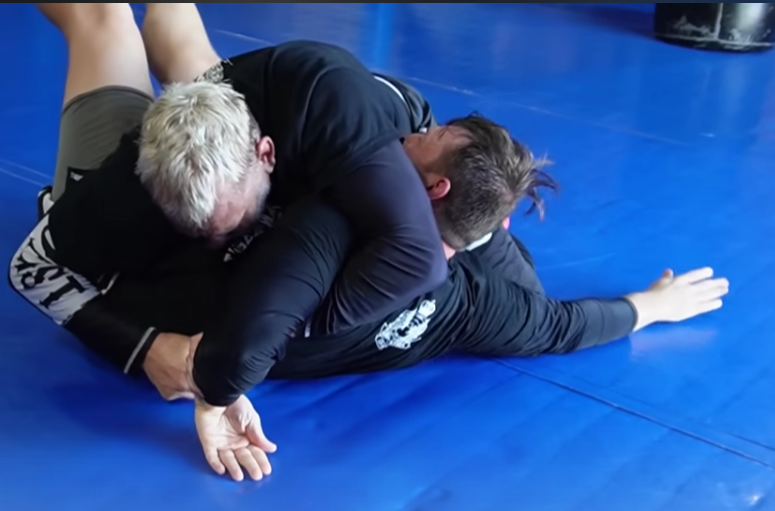
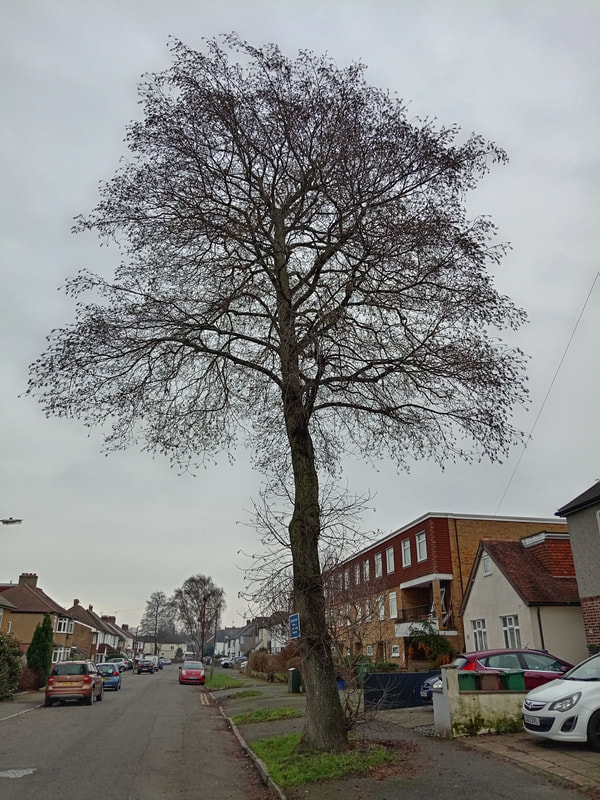
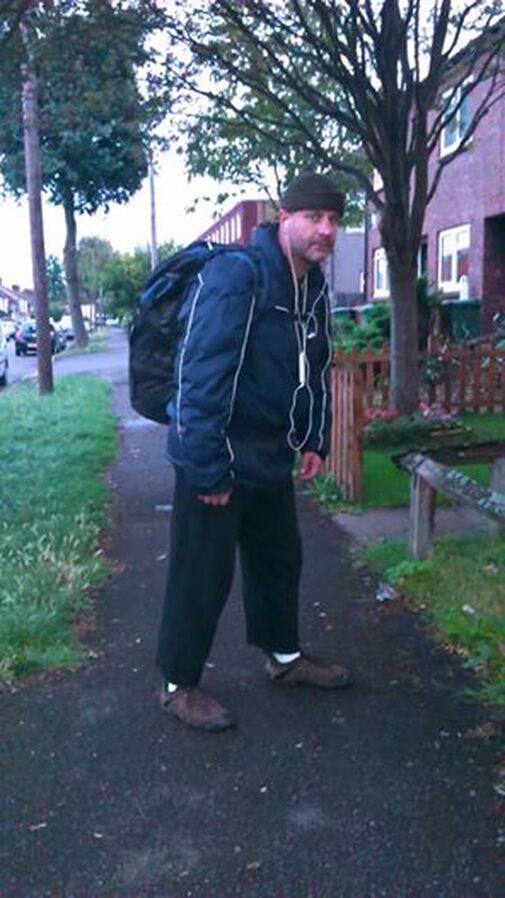
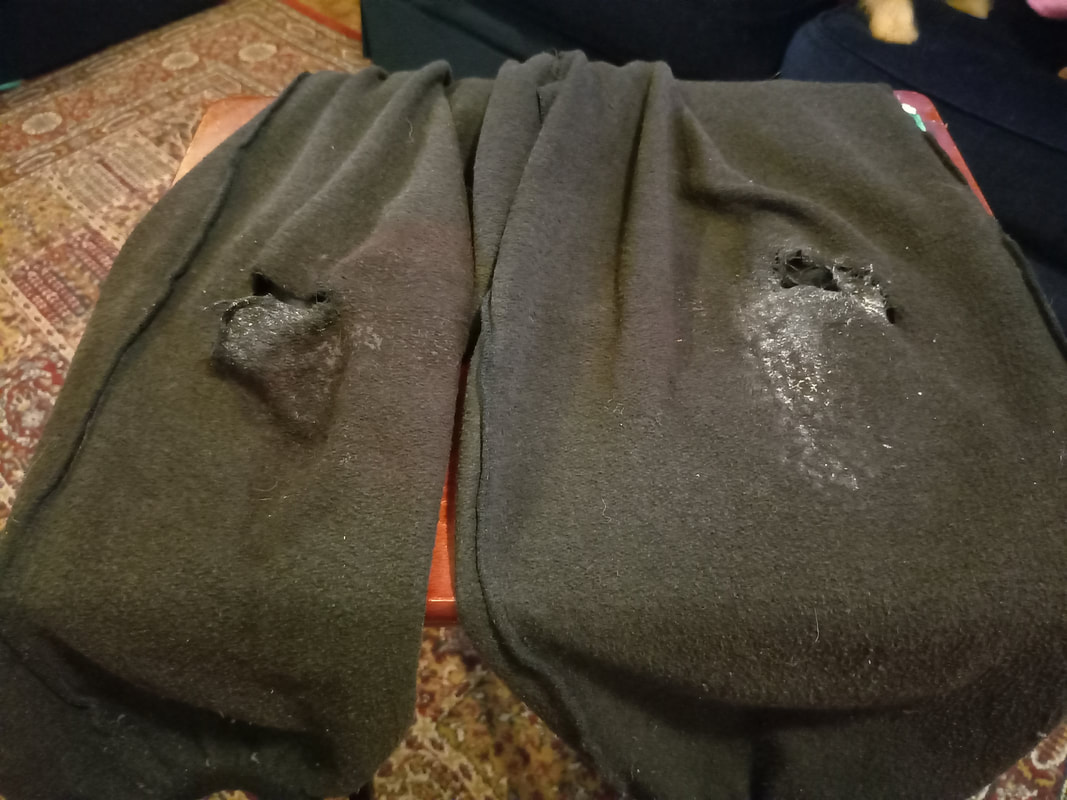
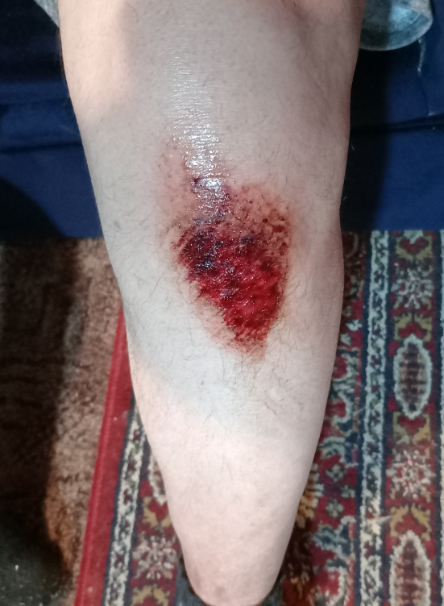
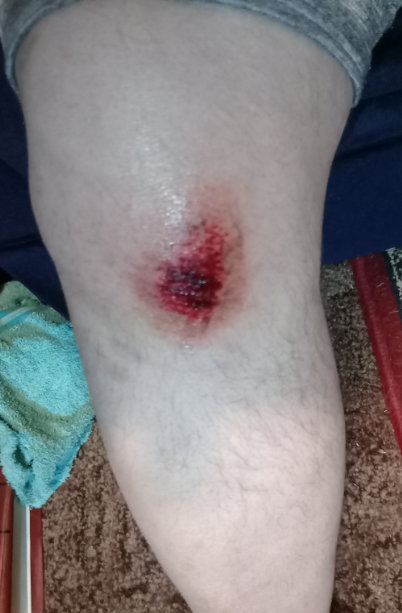
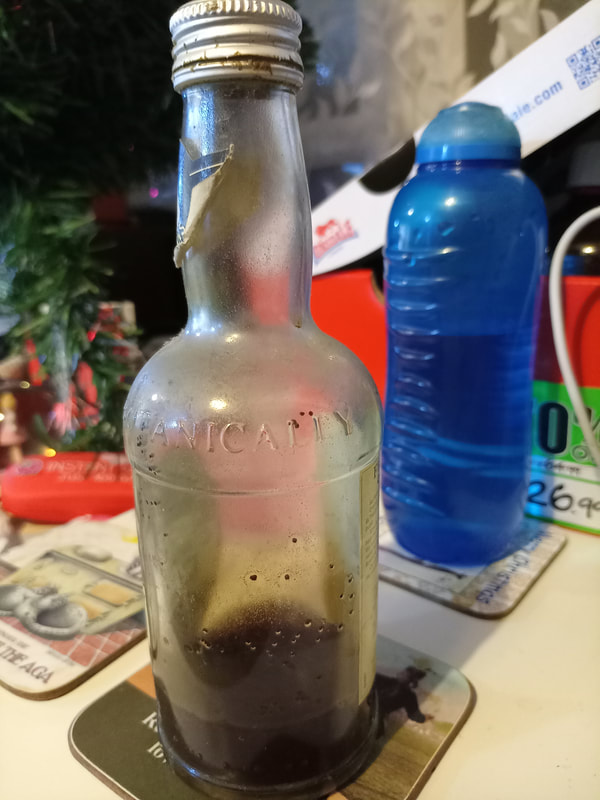
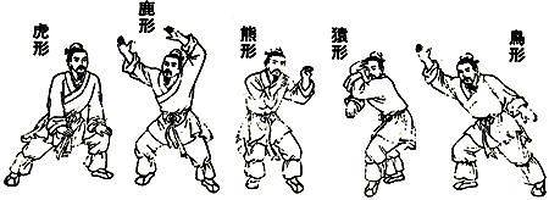

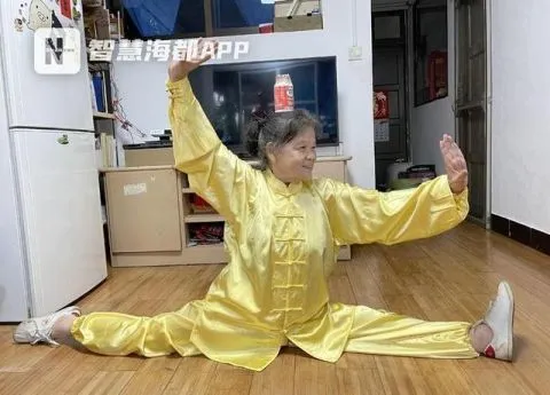
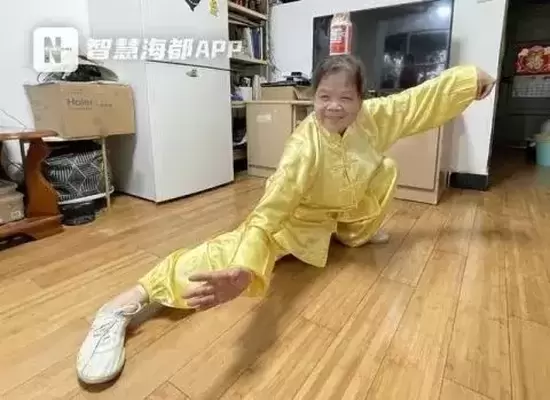
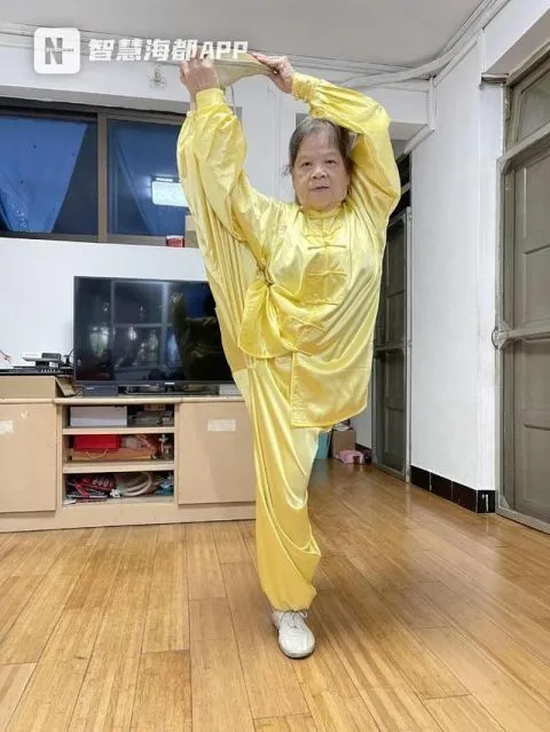
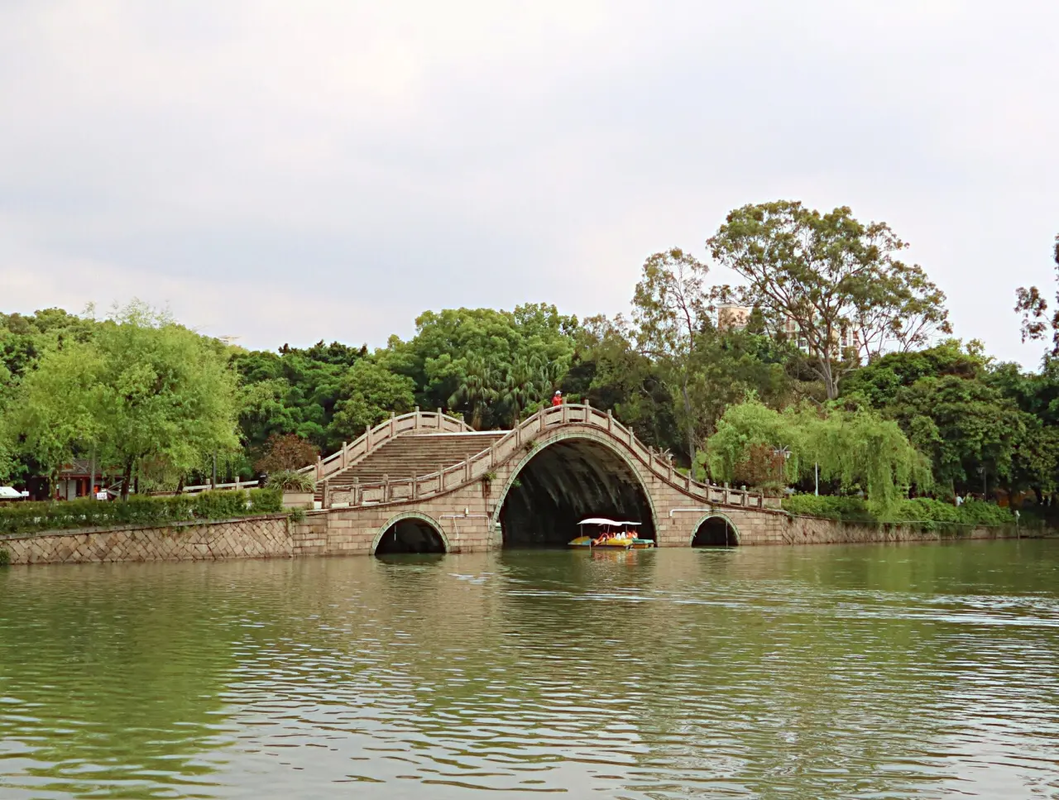
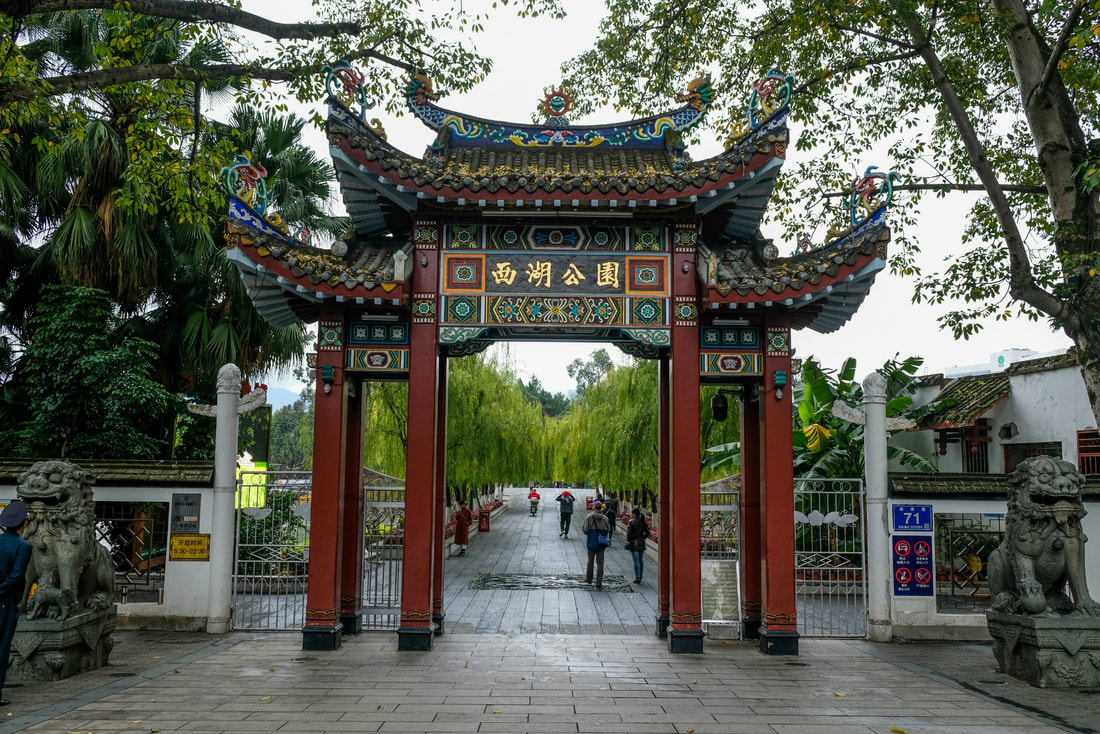
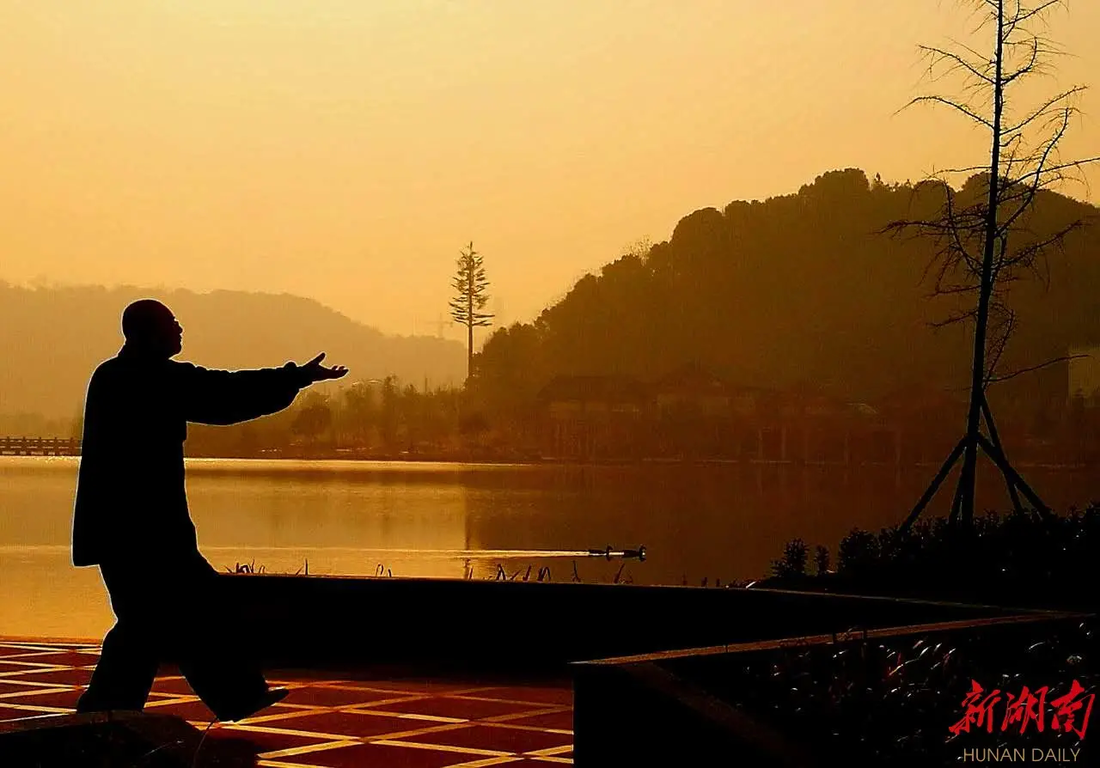
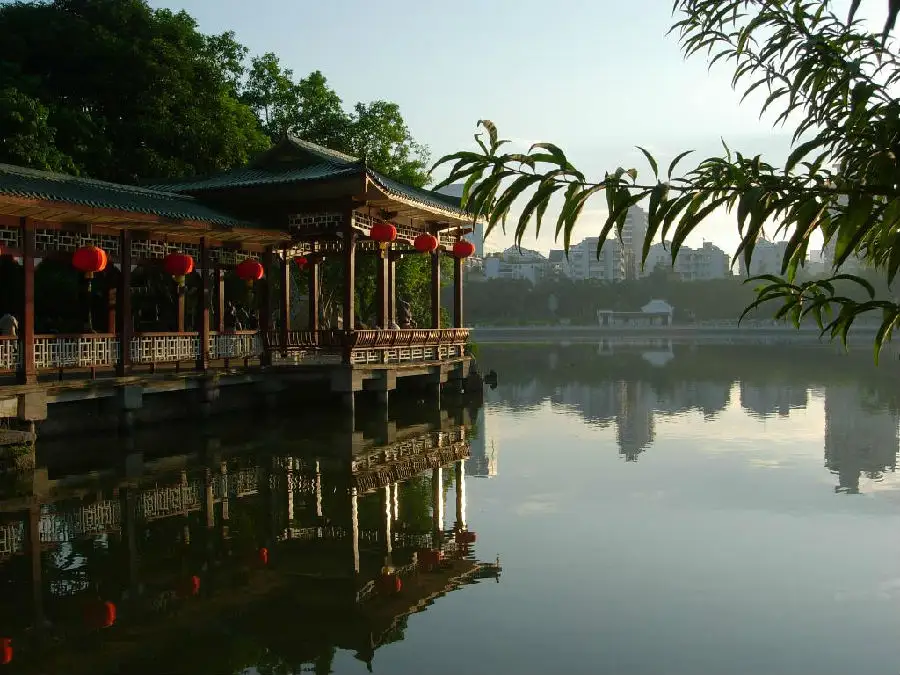
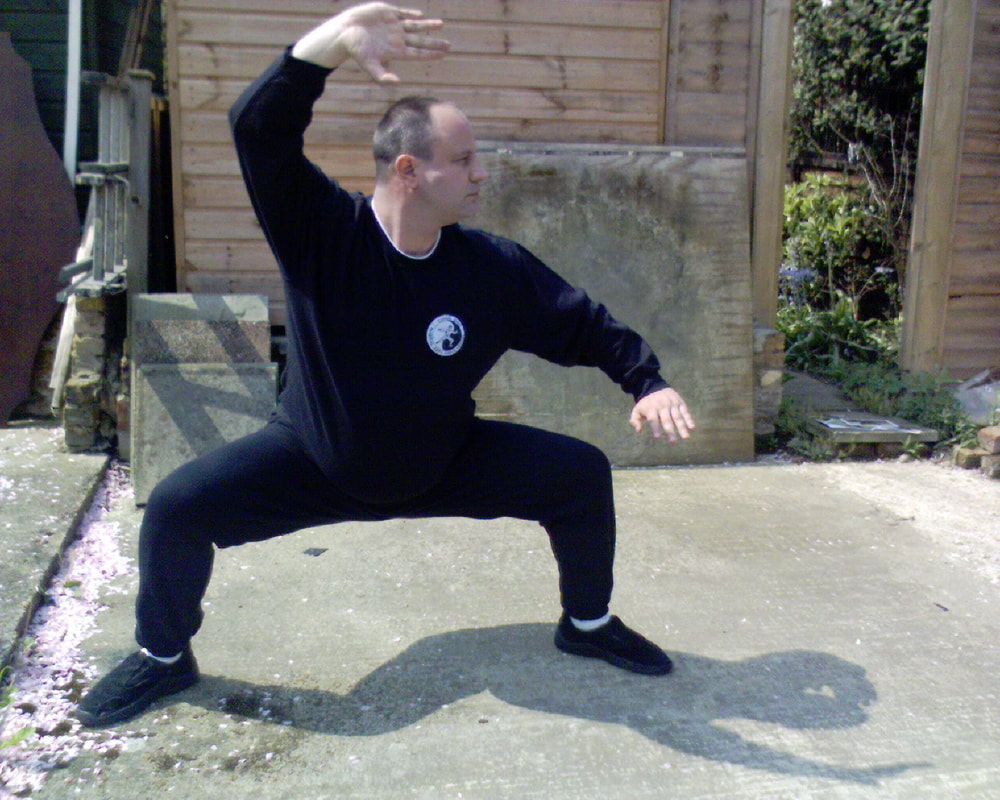
 RSS Feed
RSS Feed